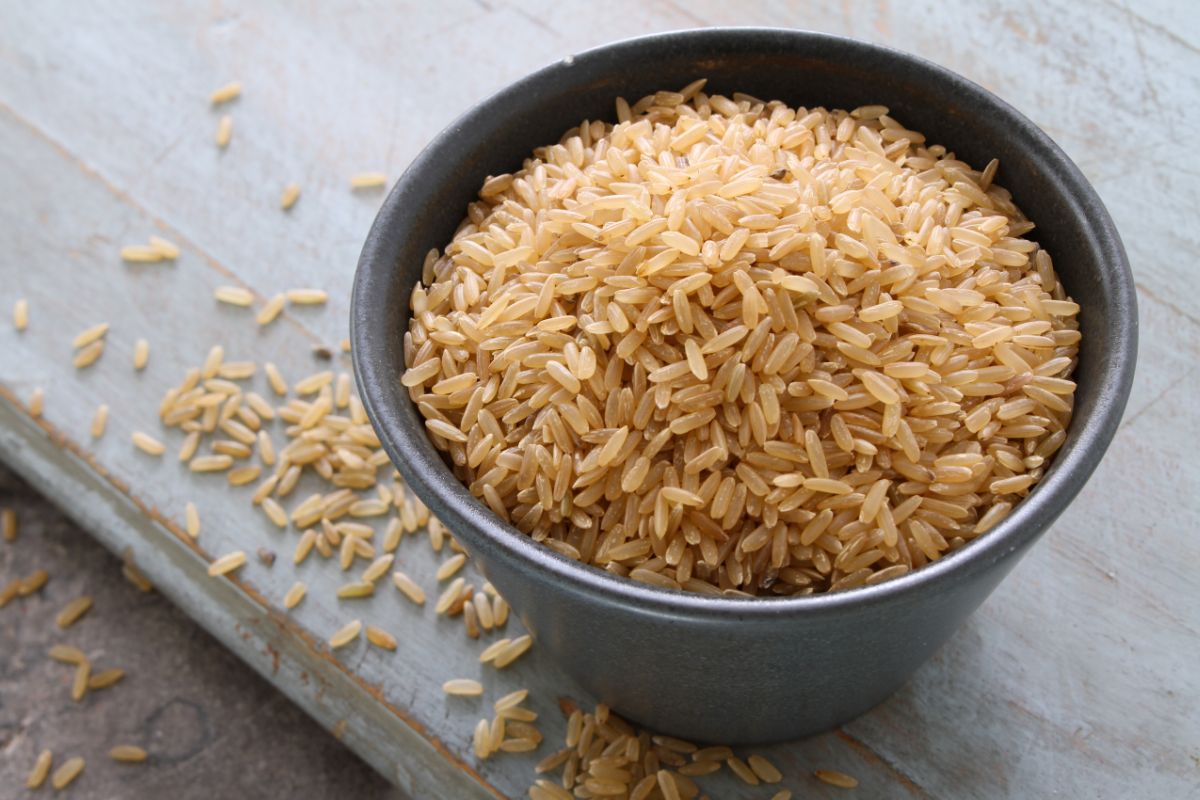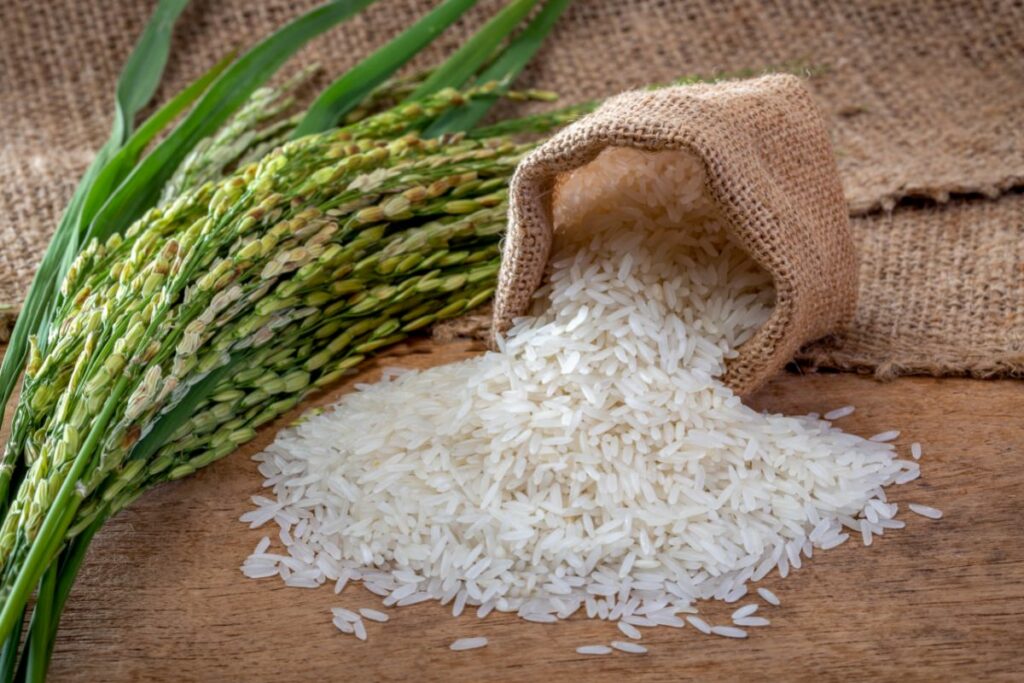Rice is a staple food that is eaten all around the world. It compliments all kinds of dishes from all kinds of cuisines, but where does it come from? Is it natural or is it man-made?
Rice is a naturally-occurring plant that grows in many different regions and nourishes over half the world. But although it’s natural it doesn’t mean that it isn’t highly processed, so let’s dive into the basics of Rice, the most common types of rice, and how it’s processed so you can make the best purchasing decision for you and your family.
What is Rice?
Rice is a grain that grows on the plant species Oryza glaberrima, and Oryza sativa. The Oryza sativa is the most common one and is grown all over the globe.
Among these two species of plant, there are several different rice varieties, and they all vary in length, size, color, etc. The specific variety that is grown does depend on the area, climate, and cultural preferences.
It is estimated that half of the world’s population depends on rice as a staple food, and that includes practically all the East and Southeastern areas of Asia. It can be cooked by boiling, or it can be ground into flour.
Some common different types of Rice:
| Rice type | Description | Color | Protein content | Fiber content | Nutritional value | Origin | Best cooking method |
|---|---|---|---|---|---|---|---|
| White Rice | Highly processed, outer bran removed | White | Approx. 2.7g | Approx. 0.4g | Low in fiber, some B-vitamins | Varied | Commonly steamed or boiled |
| Brown Rice | Outer bran intact, nutrient-rich | Tan or brown | Approx. 4.5g | Approx. 1.6g | Rich in fiber, B-vitamins, minerals | Global | Steamed, boiled, or in rice cooker |
| Jasmine Rice | Fragrant variety, slightly sticky | White | Approx. 2.2g | Approx. 0.6g | Aromatic flavor, moderate nutrient content | Thailand | Steamed, boiled, or in rice cooker |
| Basmati Rice | Long-grain, aromatic, fluffy texture | White or brown | Approx. 3.5g | Approx. 1g | Distinct aroma, moderate nutrient content | Indian subcontinent | Steamed, boiled, or in rice cooker |
| Arborio Rice | Short-grain, starchy, used for risotto | White | Approx. 2.2g | Approx. 0.3g | Creamy texture when cooked | Italy | Used for risotto or rice dishes |
| Wild Rice | Not a true rice, nutty flavor | Dark brown | Approx. 6.5g | Approx. 1.5g | Rich in protein, fiber, B-vitamins | North America | Cooked with water or broth |
Whether it is eaten alone or added to several dishes, 95 percent of the globe’s rice crop is consumed by humans.
Harvesting and preparation
The kernels of rice grow on the ends of the plant. When it is time for them to be harvested, the stalks of the plant are cut off, and the grains are removed by ‘threshing’ them.
This can be done by hand, by throwing the stalks against a tough surface in order for the grains to fall out from the stalks.
This can also be done mechanically, using a small mobile thresher, or it can be done on a larger scale in processing factories.
The rice kernels then need to be dried until their moisture depletes to around 14%. If there is too much moisture kept within them, this could lead to the growth of bacteria, as they like moist conditions.
Milling
At this point, the rice is known as paddy rice. These grains of rice are still attached to a hull or husk that is there to protect the rice grain during the growing process.
Milling the rice includes removing the outer hull from the grain. Once this has been removed you are left with brown rice. This rice is made up of three layers:
- The outer layer is the bran, which is a protective layer. It contains some wonderful nutrients such as iron, phosphorus, vitamins B1, B3, and B6, as well as fiber
- The middle layer is known as the endosperm and is the main component of the rice grain
- Attached to the endosperm is the germ and this is where a new plant would grow if the rice were to be replanted
Grains that contain all three layers are known as whole grains and are the healthier varieties as they contain layers that have all kinds of nutrients and vitamins.
White rice
Although brown rice is widely available, the majority of rice around the world is sold as white rice.
This rice has had the bran and germ removed during an extra process of milling, or they can also have whitening strips added to them.
While this kind of rice is more visually appealing, it is missing many of the valuable nutrients and minerals that brown rice has.
Enriching the Rice
When it comes to white rice, since its nutritious components of it have been removed, many countries enrich their rice in order to add these nutrients back in.
This is often done by spraying the outer layer of the rice with these vitamins and nutrients.
Benefits of Brown Rice

Many wonder what the difference in nutritional value is between brown and white rice. Keep reading to learn more about the differences between brown and white rice.
Rich in nutrients
As mentioned earlier, Brown Rice contains all three layers that are rich in nutrients, as opposed to white rice which gets stripped of some of these layers.
Around 3.5 ounces of cooked brown rice contains around 1.6 grams of fiber, whereas the same amount of white rice only has 0.4 grams of fiber.
Good for blood sugar levels
Brown Rice has a good amount of fiber and magnesium, which are great for controlling blood sugar levels.
Studies have shown that consuming whole grains such as Brown Rice can reduce the risk of developing type 2 diabetes.
Brown Rice also has a much lower glycemic index (GI) which is the measurement of how fast a food can increase your blood sugar levels.
Brown rice has a GI of around 50, whereas white rice has one of around 89.
Can reduce risk of heart cisease
Research has shown that those who regularly consume whole grains such as brown rice are at a lower risk of developing heart disease than those who don’t eat them regularly.
Helps with weight control
Several studies have also shown that consuming brown rice can help with weight loss. The research found that those who ate whole grains such as rice had a lower body mass index (BMI).
Benefits of White Rice
While Brown Rice does have more nutritional value than white rice, it does not mean that this rice variety comes without its own benefits.
Brown rice can contain arsenic
White Rice may be a good alternative to brown rice, as Brown Rice can contain some elements of arsenic although there have been some reports that show that White Rice also can contain some elements of arsenic as well.
This is a toxic heavy metal that is naturally found in the environment and it has been found in rice-based products.
Make sure that you always rinse your Rice, brown or white, multiple times until the water becomes clear instead of cloudy. This can help reduce the amount of arsenic. Also, sourcing your Rice from reputable brands can also help reduce the amount of arsenic. I prefer to buy Lundberg Organic Rice as it’s grown in California.
Brown Rice has antinutrients
Antinutrients interfere with your body’s ability to absorb nutrients. Brown rice contains some of these known as phytate and phytic acid, which makes it difficult for the body to digest properly.
Phytic acid, especially, prevents the body from absorbing zinc and iron from food, which are two very important nutrients that the body needs to thrive.
However, soaking the rice before cooking can help to keep all the healthy nutrients. If too much phytic acid is consumed in a diet, it can lead to mineral deficiencies later down the line.
Luckily, this is quite unlikely to be the case for those who have a varied, and balanced diet.
So, is Rice natural or man-made?
Rice is a natural grain that is found in plants. Therefore, it is not man-made. However, it does go through some man-made processes in order for it to be harvested and prepared for selling and eating.
Final thoughts
To conclude, rice is a form of grain that is grown on the Oryza glaberrima and Oryza sativa plants.
When it is time for it to be harvested, the grass stalks are cut off and the grains are removed by slinging the stalks against a tough surface. This causes the grains to fall out.
From here, the grains are dried and milled to produce brown rice, which contains the three layers of the bran, embryo, and endosperm.
Further modifications are then done to create other types of rice, such as white rice.








